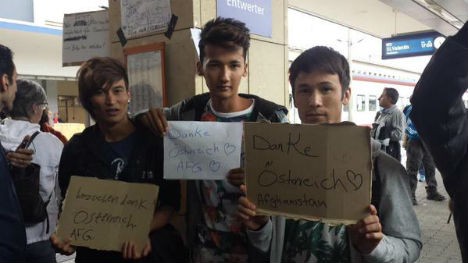The leaders of Austria, Bulgaria, Croatia, Germany, Greece, Hungary, Romania and Slovenia will meet on Sunday with their counterparts from non-EU states Macedonia and Serbia, the office of European Commission President Jean-Claude Juncker said.
“In view of the unfolding emergency in the countries along the western Balkans migratory route, there is a need for much greater cooperation, more extensive consultation and immediate operational action,” a statement said.
The continent has been struggling to find a unified response on how to tackle its biggest migration crisis since 1945.
More than 600,000 migrants and refugees, mainly fleeing violence in Syria, Iraq and Afghanistan, have braved the dangerous journey to Europe so far this year, the UN said.
The goal for many travelling is the EU's biggest economy Germany, which expects to receive up to a million asylum requests this year.
Since Saturday, when Hungary sealed off its border with Croatia, more than 24,455 migrants have arrived in Slovenia, a nation of two million people.
In response, the Slovenian parliament amended a law which would allow soldiers to join border police in patrolling the 670-kilometre (416-mile) frontier with Croatia.
The amendment now means troops can detain people and hand them over to the police, as well as issue orders to civilians in the border area.
EU Commissioner for Migration Dimitris Avramopoulos is to visit Slovenia on Thursday to discuss its request for backup from police forces in other EU countries.
“The last 24 hours have been the toughest and most demanding since the start of the crisis,” the Slovenian government said, warning it was “delusional” to expect small countries to succeed where larger ones had failed.
Tensions, fire
Around 11,000 people were still stuck in Slovenian registration centres on Wednesday morning, waiting to continue their journey.
And tensions briefly flared in southern Austria when some 1,000 migrants broke through a police barrier at the Spielfeld border crossing and started marching north, an AFP photographer said.
Police eventually convinced them to return to the checkpoint and wait for buses provided by the government to transport them toward Germany.
Vienna said more than 6,000 migrants had entered Austria since Tuesday night, with most only passing through.
Further south, long lines of several hundred migrants formed near Croatia's border with Slovenia on Wednesday morning, an AFP reporter said.
Progress was slow as police at the Berkasovo checkpoint were only allowing a trickle of people through.
Croatia sent extra security forces to the border to prevent migrants from crossing into fields and entering Slovenia through its green frontier.
Meanwhile, a fire broke out briefly on Wednesday morning at a refugee camp near another Croatian border crossing.
Around 25 tents suddenly caught fire at the Brezice camp, with black smoke billowing into the sky. Firefighters managed to extinguish the blaze, whose origin remained unclear.
Forced to spend hours in freezing temperatures and rain, people often resort to lighting makeshift fires to warm themselves.
Slovenia voiced sharped criticism over Zagreb's decision to open its borders on Monday night, letting thousands of people into Slovenia.
“I deplore the lack of communication and cooperation with the Croatian authorities,” Prime Minister Miro Cerar said in an interview published in German daily Die Welt on Wednesday.
“Croatia doesn't respect border crossing agreements or the number of refugees supposed to enter Slovenia.”
Struggling relocation
With at least 9,000 people landing on Europe's beaches every day, there appeared to be no end to the human tide surging into the bloc.
The Netherlands on Wednesday said it received a record 8,400 asylum-seekers in September, the highest-ever number received in one month.
Last month, the EU approved plans to relocate 160,000 asylum seekers from overstretched frontline states Italy and Greece with a compulsory quota system that was fiercely opposed by some eastern, more hardline members of the bloc.
The plan requires most of the 28 member states accept a share of those people over the course of two years.
So far, only 19 Eritrean asylum seekers have been relocated from Italy to Sweden although another 100 people are due to be flown to other cities in the coming days.
Out of the 23 member states that are legally required to admit a share of the human burden, only six have offered immediate places so far — Austria, France, Germany, Luxembourg, Spain and Sweden, the source said.
Member states have also been slow to follow up with promised financial help — out of the 2.8 billion euros ($3.2 billion) pledged at an emergency EU summit on September 23, only about 474 million euros has materialised.
In a related development, the EU's border agency said member states had provided less than half of the personnel it had requested to help out in overstretched locations in Greece and Italy.



 Please whitelist us to continue reading.
Please whitelist us to continue reading.